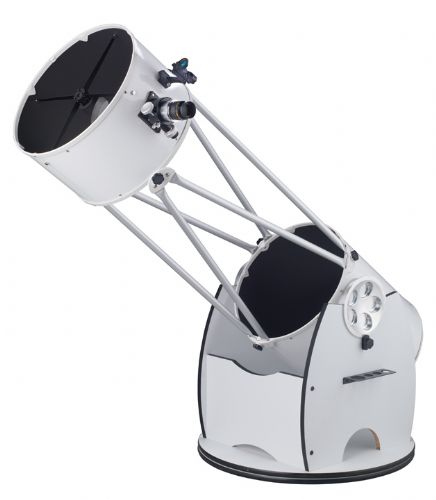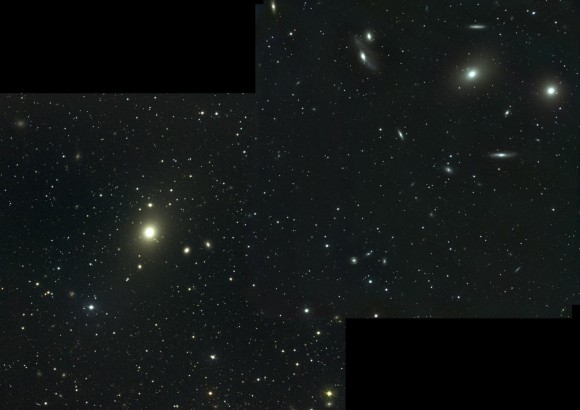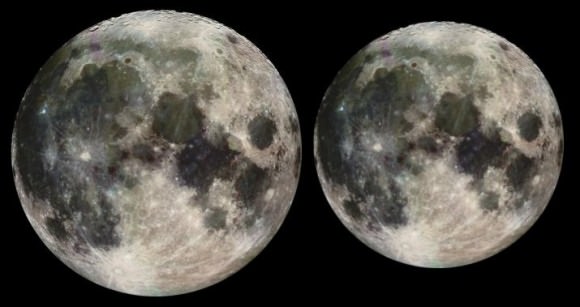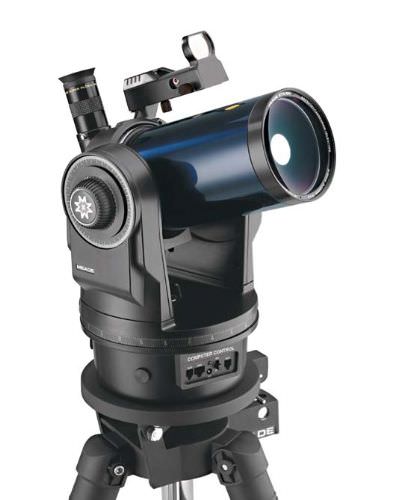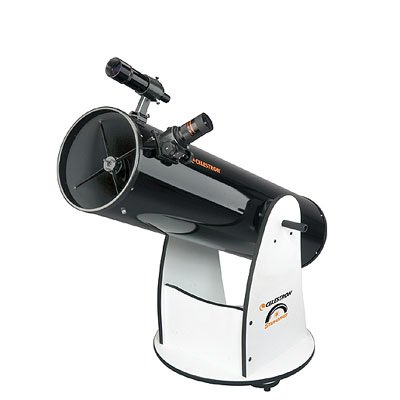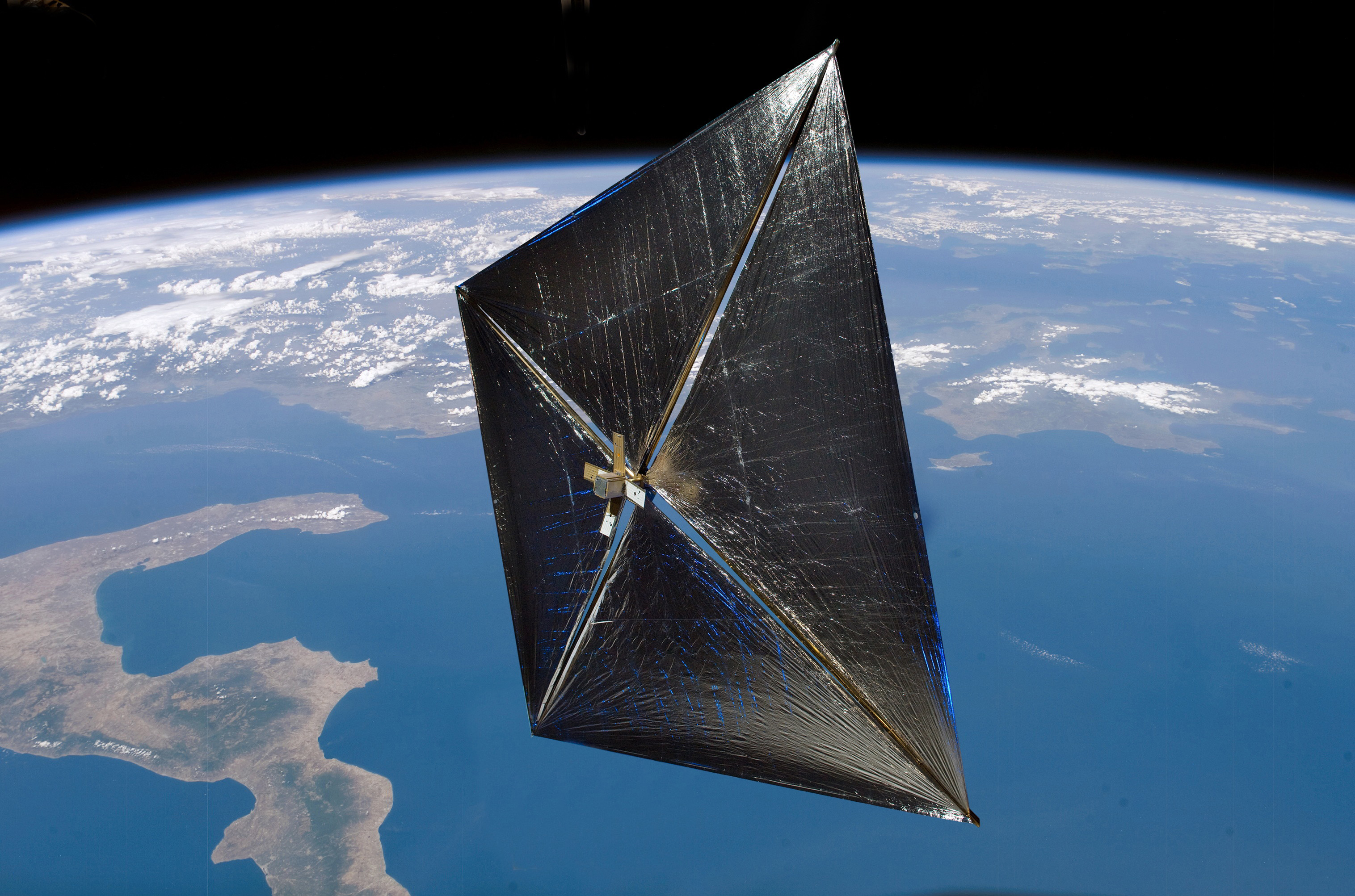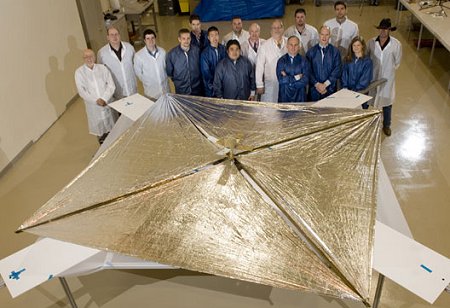[/caption]
Welcome to the scary and expensive world of buying your first, or replacing your old telescope!
I am asked all the time “What telescope should I buy” or “What telescope do I need to see X with?” Nine times out of ten, I recommend a Dobsonian Telescope.
So what is a Dobsonian telescope and why are they so good? Read on to find out why.
A Dobsonian is simplicity in itself; a simple set of optics on a simple mount. But don’t be fooled by this simplicity. Dobsonian telescopes are incredibly good and are great for amateurs and professional astronomers alike. They are also very economical compared to other telescopes.
The optical part of the telescope or OTA (Optical Tube Assembly) is the same as a Newtonian reflector telescope. It consists of a primary parabolic mirror and a flat secondary mirror in an open ended tube, with a focuser for an eyepiece set on the side. Light enters the tube, reflects off of the primary mirror at the base and is then focused onto the smaller flat secondary mirror and then finally, into an eyepiece. Simple!

The benefit of this type of optical arrangement is the telescopes light gathering ability. The more light gathered, equals more fainter objects to be seen. A light bucket!
Dobsonian/Newtonian telescopes have a big advantage over telescopes with lenses such as refractors and Cassegrain telescopes, as mirrors are a lot cheaper to make than lenses. Plus they can be a lot bigger!
Both Dobsonian and Newtonian telescopes are measured by the size of the diameter of their primary (big) mirror. Dobsonian sizes range from starter scopes of 6 inches up to 30 inches, but common sizes are 8 to 16 inches in diameter. They can be many times larger and less expensive to produce than scopes with lenses.
The second part of a Dobsonian telescope is the mount. As with the optical part the mount is just as simple, if not more so! A basic manual mount which supports the optical tube and can be manually moved by hand in the Altitude (up/down) and Azimuth (left/right) axis.
The mount is usually made from wood or metal with bearings and support for the two axis of movement. More so lately, some manufacturers have put GoTo systems with motors on some Dobsonian mounts. Personally I think it’s a bit over kill for a Dobsonian, as finding objects manually by star hopping or other manual methods helps you learn the sky better and can be fun.
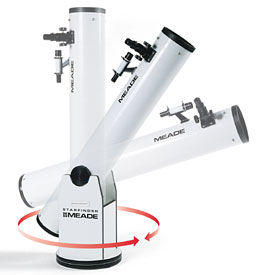
Resist the urge to spend lots of money on small computerized scopes that will eventually never get used, as they can be too complicated or you may not see much through them apart from the brightest objects such as the Moon. A Dobsonian is a great all-around telescope, and are available in almost all telescope stores. Some people make their own homemade Dobsonian scopes too!
Due to the nature of the Alt-Az mount, Dobsonians are not suitable for long exposure astro imaging. For that you will need an equatorial mount, which will track the stars equatorially. You may have some success with webcam imaging with some of the GoTo Mounts though.

Dobsonian telescopes are designed to be simple, easy to use and gather as much light as possible. Because of this robust simplicity, they are very economical and popular with astronomers of all levels of ability. My own and most favourite telescope is my Skywatcher 10-inch Dobsonian and I will probably be using it for many more years to come, as it is difficult to beat!
The name of the Dobsonian telescope comes from its creator John Dobson, who combined the simple design of the Newtonian telescope with the Alt-Azimuth mount. He originally made simple homemade scopes from household materials and ground mirrors out of the glass of old ship portholes.
John Dobson is the grandfather of Sidewalk Astronomy and co-founder of the San Francisco Sidewalk Astronomers.


